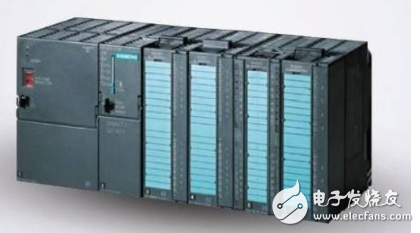PLC systems are known for their versatility, ease of use, wide adaptability, high reliability, strong resistance to interference, and simple programming. It is expected that the application of PLC control technology will become a global trend in the field of industrial automation. Today, we’ll explore common faults and maintenance techniques for industrial PLCs.
**01 CPU Exception:**
When the CPU triggers an error, check if all components of the CPU unit are properly connected to the internal bus. The troubleshooting process involves replacing suspected units one by one to identify and resolve the faulty component.
**02 Memory Exception:**
If the memory is malfunctioning, reprogramming may help determine whether the issue is due to program corruption. If the problem persists after reprogramming, it might be caused by noise interference or a faulty memory chip, which should be replaced.
**03 Input/Output Unit Error or Expansion Unit Fault:**
When such an error occurs, first verify the connection status of the I/O and expansion units. Check the cable connections and identify the faulty unit before replacing it.

**04 Program Not Executing:**
To troubleshoot, follow the input → program execution → output sequence.
(1) For input checks, use the LED indicators or a writer’s input monitor. If the LED is off, there may be an external input issue, or the input unit could be faulty.
(2) During program execution, check the writer’s monitor. Inconsistencies between the ladder diagram and actual results may indicate a program error or hardware failure.
(3) For output checks, observe the LED indicators. If the output LED shows an error but the operation is correct, the CPU or I/O interface may be at fault. If the LED is on but no output is produced, the output unit or external load system may be faulty.
Note: Different PLC models may have varying LED connections (some connected directly to the I/O unit, others via the I/O interface), so the fault diagnosis may differ accordingly.
**05 Some Programs Not Executed:**
The same approach as above applies. However, if the input time for counters or step controllers is too short, the system may not respond. In this case, ensure the input time is sufficient—ideally, the maximum input response time plus the scan time multiplied by two.
**06 Short Power Outage Causes Program Loss:**
Besides checking the battery, test the power-on/off cycle of the PLC. A faulty save circuit during reset can prevent the program from being saved. If the battery alarm still appears after replacement, check for abnormal leakage current in the memory or external circuits. Also, consider noise interference from the machine system, especially from motors or coils.
**07 PROM Not Working:**
Check if the PROM is properly inserted. If not, replace the chip.
**08 System Stops After Power-On or Reset:**
This could be due to noise interference or poor internal contact. Gently tapping the PLC body can help identify loose connections. Also, check the insertion of cables and connectors.
**09 Inverter Interference with PLC Analog Signals:**
In many automatic control systems, frequency inverters are widely used, and their interference with PLC analog signals has become a common issue. Here's an example of how to address such interference using a signal isolation module.
**Phenomenon:**
A Siemens PLC sends a 4–20mA control signal to a Siemens inverter, but the inverter fails to start.
**Fault Diagnosis:**
1. Initially suspected the analog output board, but measuring the 4–20mA signal showed it was normal.
2. Replaced the inverter, but the issue remained.
3. Used a hand-held signal transmitter to send a standard 4–20mA signal, and the inverter started normally. This ruled out the analog output board and the inverter.
4. Concluded that the inverter’s interference was affecting the analog channel.
5. Installed a signal isolation module (TA3012) in the 4–20mA output channel. After connecting the input terminals to the analog output module and the output to the inverter, the inverter operated normally.
6. Confirmed that the root cause was interference from the inverter.
Many automation engineers have faced similar issues during system debugging. Based on my experience, here are key points to avoid inverter interference with PLC analog signals:
1. Use separate power supplies for the PLC and the inverter, and choose an isolation transformer for the PLC power.
2. Keep power lines and signal lines apart, and ensure signal lines are properly shielded.
3. Always use signal isolation modules for both analog input and output channels.
4. Implement software filters in the PLC program to reduce noise.
5. Design separate grounding for signal and power lines.
By following these five steps, you can effectively solve the issue of inverter interference with PLC analog signals.
4.2Mm Ribbon Connector,Strip Connectors,Strip Terminal,Strip Connector
YUEQING WEIMAI ELECTRONICS CO.,LTD , https://www.wmconnector.com